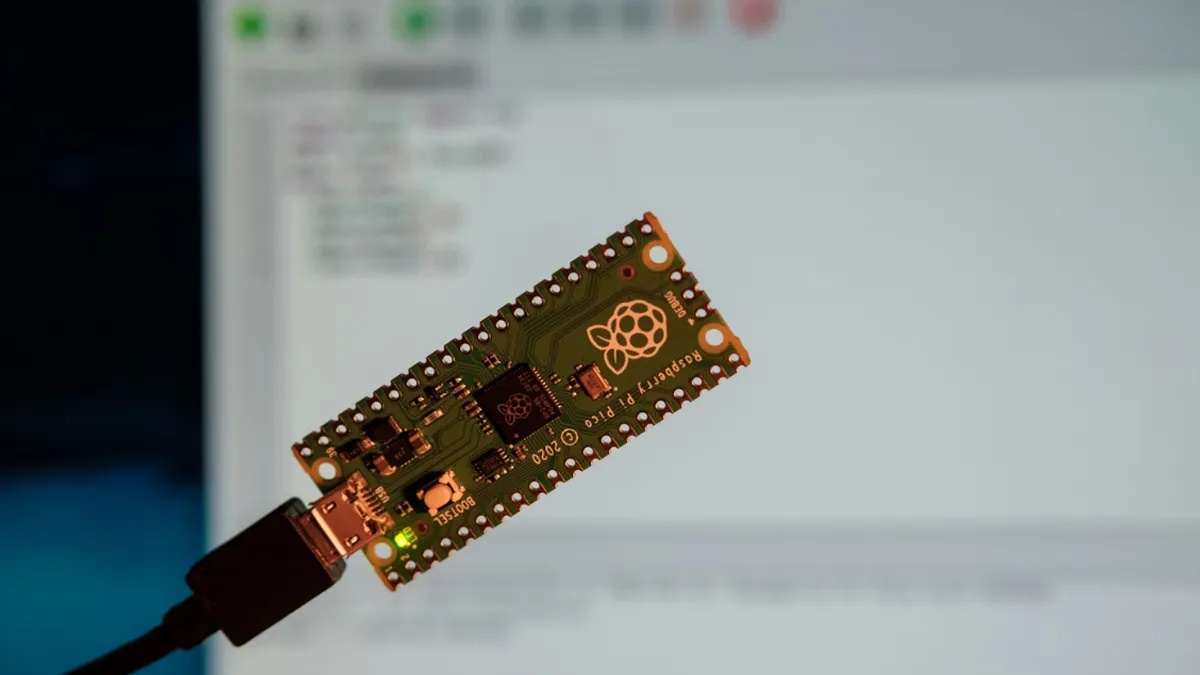
Microbiology Testing for Medical Devices
MICrobiological testing has been widely applied in areas like cytology and molecULar biology, and many new methods and technologies are being used in microbiological testing for medical devices. One of the most common aspects of microbiological examination of samples is bacteriological testing, with morphological examination of microorganisms being the primary method. Using primary morphological functions and biochemical processes as indicators, microorganisms are classified and identified.
Microbiological Testing Methods for Medical Devices
1.1 Microscope Examination
Humans can use microscopes to observe individual cells and bacteria that are too small to be seen by the naked eye. Microscope examination can generally be divided into optical microscopy and electron microscopy, depending on the resolution. Optical microscopes have a limited resolution and can be used to observe the general shape and structure of microorganisms. To clearly distinguish internal structures of microorganisms, higher-level electron microscopes are needed. There are various types of optical microscopes, including standard optical microscopes, dark field microscopes, fluorescence microscopes, and differential interference contrast microscopes. Electron microscopes include transmission electron microscopes and scanning electron microscopes.
1.2 Staining Specimen Examination
After staining, cells show significant differences from their surrounding environment, making it easier to observe cell size, arrangement, and unique chemical structure using an optical microscope. The basic process for bacterial staining includes: drying—fixing—mordanting—decolorizing—counterstaining. The following staining methods are commonly used:
1.2.1 Simple Staining Method
Using a single dye to stain bacteria. After treatment with the simple staining method, the morphology, arrangement, size, and simple structure of the bacteria can be observed. However, due to the single color of the dye, this method cannot show the staining differences of various bacteria.
1.2.2 Differential Staining Method
This method uses two or more dyes for staining. Common methods include Gram staining and acid-fast staining. Gram staining is a key biological identification technique widely used in bacteriology. Except for stool, blood, and very few other specimens, most specimens must first undergo Gram staining, followed by microscopic observation before centrifugal culture. This method can distinguish microorganisms and directly identify them, making further microbial identification easier. Acid-fast staining divides bacteria into acid-fast and non-acid-fast types.
1.2.3 Fluorescent Staining
Fluorescent staining is highly sensitive, efficient, and easy to observe, offering significant practical value.
Other staining methods include flagella staining, metachromatic granule staining, and more.
1.3 Non-Stained Specimen Examination
Direct observation of unstained bacterial samples under the microscope allows for differentiation of the morphology and movement of bacteria in their normal living state. Common preparation methods include hanging drop and smear methods. In the hanging drop method, a small amount of Vaseline is applied around the concave of a clean glass slide. A sterilized inoculating loop is used to place a small amount of sterile water on a clean cover slip. Then, a small sample of bacteria is placed on the sterile water. If the culture is liquid, a small drop of culture liquid can be directly placed on the cover slip. The cover slip is flipped over and placed above the slide, ensuring the drop is contained in the concave part. The slip is gently pressed to seal it with Vaseline. In the smear method, bacteria suspension or saline is placed in the center of a clean slide using an inoculating loop, followed by the application of a cover slip. It's important to ensure the correct amount of sample is taken to prevent spillage and air bubbles.
1.4 Gene Probe Technology
Gene probe technology works by using the principle that nucleic acid single strands with homologous sequences in target cells can form stable DNA-RNA or DNA-DNA chains under suitable conditions. Highly specific gene fragments are used to prepare gene probes to identify bacteria. Gene probes REDuce the need for multiple genetic fragment data and, while relatively advanced, the technique still shows imperfect results when detecting strains of methane-producing bacteria other than the target strains. The applicability of this method is also not universal.
1.5 Bacterial Direct Counting Method
This method is divided into flow cytometry (FCM) and solid-phase cytometry (SPC). The principle is that lasers are used as a light source, with the focused beam vertically irradiating the sample flow. Biological cells treated with fluorescent dyes scatter light and emit fluorescence. The scattered light signals help determine cell volume, and the intensity of the signals can identify cell surface antigens or material concentration inside the cell. By analyzing the scatter and fluorescence signals, the size, quantity, and shape of microorganisms can be estimated. This method is highly sensitive and can simultaneously identify the properties and quantities of bacteria. It is widely used in determining total bacterial counts and detecting pathogenic Salmonella and Escherichia coli. This method provides precise detection for specific cells and is faster than traditional plate counting, but its high cost limits widespread adoption.
Relevant Testing Standards
2.1 National Quality Supervision, Inspection and Quarantine Administration, Microbial Standards for Medical Devices
- GB/T 19973.1-2015: Sterilization of Medical Devices - Microbiological Methods, Part 1: Determination of Total Microbial Count on Products
2.2 National Medical Products Administration, Microbial Standards for Medical Devices
- YY/T 0681.14-2018: Sterile Medical Device Packaging Test Methods, Part 14: Wet and Dry Microbial Barrier Test for Permeable Packaging Materials
2.3 German Standardization Society, Microbial Standards for Medical Devices
- DIN 58953-6-2016: Disinfection - Disinfection Material Supply, Part 6: Microbial Barrier Testing of Packaging Materials for Medical Devices to be Sterilized
2.4 Industry Standards - Pharmaceuticals, Microbial Standards for Medical Devices
- YY/T 1463-2016: Sterilization Confirmation of Medical Devices - Guidelines for Selecting Microbial Challenges and Contaminated Sites
- YY/T 0681.10-2011: Sterile Medical Device Packaging Test Methods, Part 10: Microbial Barrier Classification Test for Permeable Packaging Materials
2.5 Korean Standards, Microbial Standards for Medical Devices
- KS P ISO 11737-2-2012: Sterilization of Medical Devices - Microbiological Methods, Part 2: Sterility Tests Performed During the Sterilization Process
- KS P ISO 11737-1-2012: Sterilization of Medical Devices - Microbiological Methods, Part 1: Determination of Microbial Population on Products
2.6 British Standards, Microbial Standards for Medical Devices
- BS EN ISO 11737-2-2009: Sterilization of Medical Devices - Microbiological Methods, Part 2: Sterility Tests During the Sterilization Process
2.7 French Standardization Association, Microbial Standards for Medical Devices
- NF S98-118-1-2006: Sterilization of Medical Devices - Microbiological Methods, Part 1: Determination of Microbial Population on Products
2.8 European Standardization Committee, Microbial Standards for Medical Devices
- EN ISO 11737-1-2006: Sterilization of Medical Devices - Microbiological Methods, Part 1: Determination of Microbial Population on Products
2.9 International Organization for Standardization, Microbial Standards for Medical Devices
- ISO 11737-1-2006: Sterilization of Medical Devices - Microbiological Methods, Part 1: Determination of Microbial Population on Products
2.10 American National Standards Institute, Microbial Standards for Medical Devices
- ANSI/AAMI/ISO 11737-1-2006: Sterilization of Medical Devices - Microbiological Methods, Part 1: Determination of Microbial Population on Products
2.11 American Society for Testing and Materials, Microbial Standards for Medical Devices
- ASTM E2314-2003: Standard Test Method for Determining the Effectiveness of Cleaning Processes for Reusable Medical Devices Using Microbial Methods
Email:hello@jjrlab.com
Write your message here and send it to us
 Infant Support Pillow 16 CFR 1243/1242 & ASTM
Infant Support Pillow 16 CFR 1243/1242 & ASTM
 BRM Registration Card Under CFR Part 1130 Regulati
BRM Registration Card Under CFR Part 1130 Regulati
 How to get a D-U-N-S® Number for US FDA Registrati
How to get a D-U-N-S® Number for US FDA Registrati
 Household Massage Devices Compliance in the China
Household Massage Devices Compliance in the China
 Compliance for the Global In Vitro Diagnostic (IVD
Compliance for the Global In Vitro Diagnostic (IVD
 Compliance Guide for Nebulizers in European and Am
Compliance Guide for Nebulizers in European and Am
 Cybersecurity Certification Service for EU RED Dir
Cybersecurity Certification Service for EU RED Dir
 ANATEL Certification Compliance Guide for Brazil M
ANATEL Certification Compliance Guide for Brazil M
Leave us a message
24-hour online customer service at any time to respond, so that you worry!




